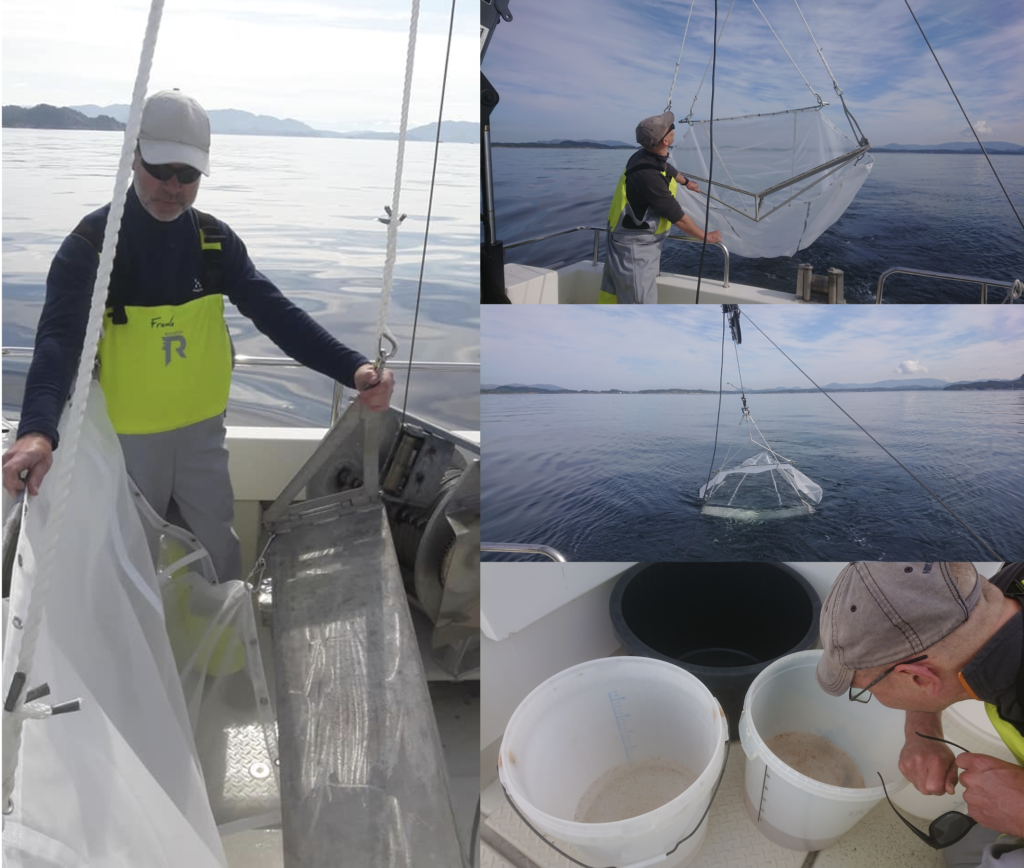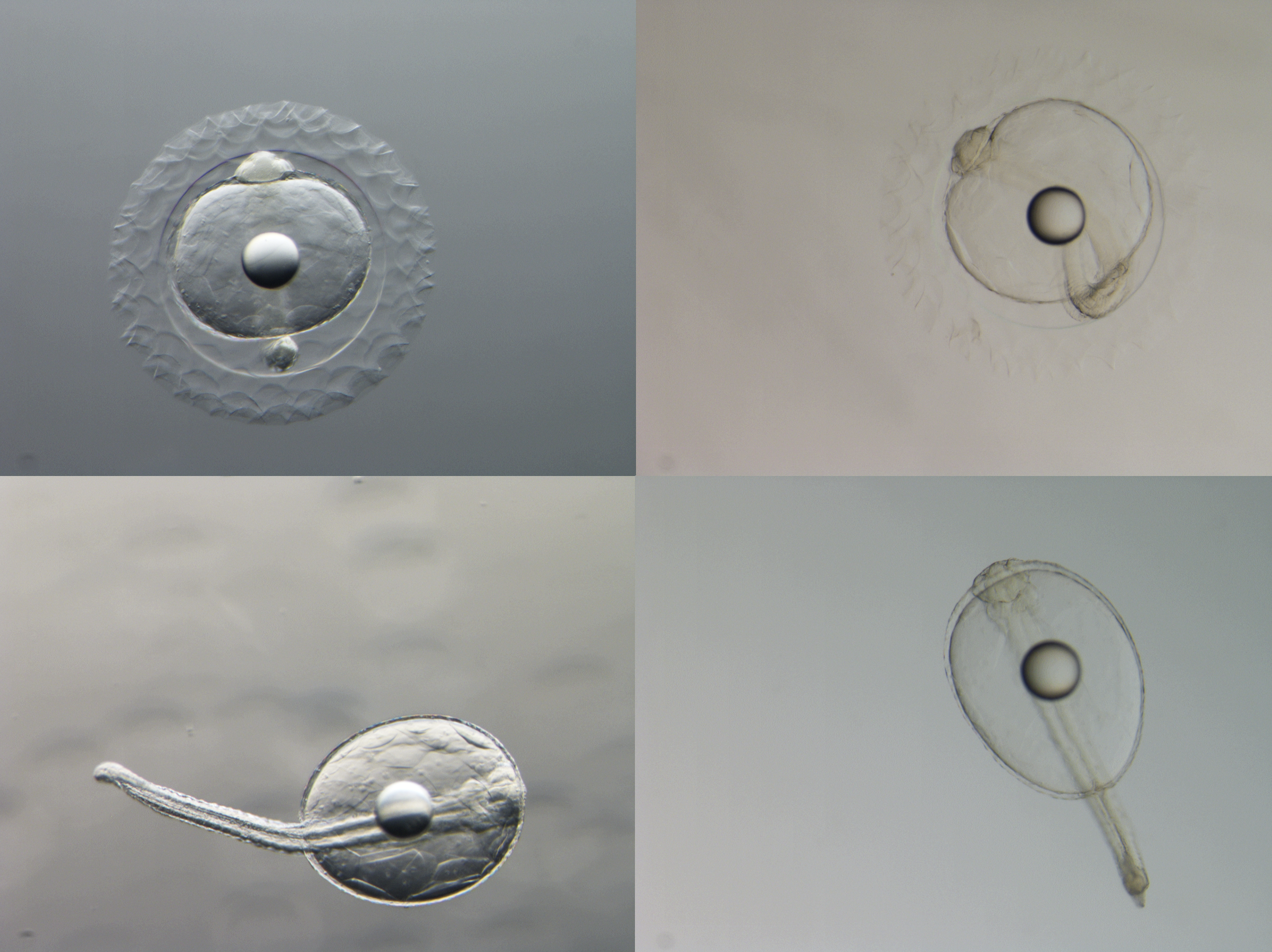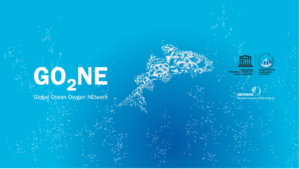Written by members of the HypOnFjordFish team // 15 June 2021
For work program 2 of HypOnFjordFish, which focuses on the physiological impacts of hypoxia on fish metabolism and growth, one of the goals is to capture and raise mesopelagic fish in the lab. To do this first requires identifying the spawning period of the two mesopelagic fish species in the fjords: Benthosema glaciale and Maurolicus muelleri, then, successfully capturing eggs in the field during an early stage of development, and finally, bringing them back to the lab to complete the developmental process, hatch, and begin feeding and growing. No one has ever been able to conduct lab experiments with healthy mesopelagic species, so establishing a lab population would be a major breakthrough in allowing us to study them. However, due to the numerous difficulties and unknowns, this is one of the riskiest components of the HypOnFjordFish project.

Last week, Frank Midtøy and Heikki Savolainen went to Korsfjorden on the research vessel Emiliana to begin the preliminary process of testing gear to collect mesopelagic fish eggs. For this they used an Isaacs-Kidd Midwater Trawl (IKMT) with 500 micron mesh size, which could retain small fish eggs if they were present in the midwater. For this first round of sampling, they lowered the IKMT down to 100 m, where water temperatures were a cool 8°C. Based on the few published studies, B. glaciale reaches maturity at an age of 2 or 3 years, and spawn mainly during summer with peaks in June and July. Not much is known about the vertical distribution of the eggs. While the larvae seem to be quite common among plankton samples at depths ranging between 50 and 400 m (particularly in the 100-200 m layer), eggs are usually harder to retrieve. M. muelleri`s spawning season lasts from March to September, and mature individuals have been observed already at age 1. Each individual spawns through a series of batches during the season, and eggs have been reported to lay between 50 and 200 m depth, and in waters with a temperature of 7 to 11.6° C. However, expectations were relatively low for this first cruise to actually capture and bring developing eggs back to the lab.

Microscope images taken at 50X magnification of Maurolicus muelleri eggs and larvae developing in the lab. Top: Eggs in late stage of development; Bottom: Newly hatched larvae with large yolk sac. All microscope images taken by Julie Skadal.
To the great excitement of all on the HypOnFjordFish team, Heikki and Frank, found high numbers of developing M. muelleri eggs at different stages of development in their net tow. They were able to collect these, transport them back to the lab in good shape, and now they are being imaged daily at the University of Bergen to track their development. We hope to be able to keep them alive through hatching and then feeding, but we do not even know how long the development time is for this species. While Korsfjorden had a high number of developing M. muelleri eggs, no B. glaciale were captured. This may be because the adults of this species are less common in this fjord, or because this is not the right reproductive window for this species. Luckily, Heikki and Frank have some additional upcoming exploratory cruises to capture mesopelagic fish eggs, so hopefully these will yield more M. muelleri eggs and some B. glaciale eggs.

